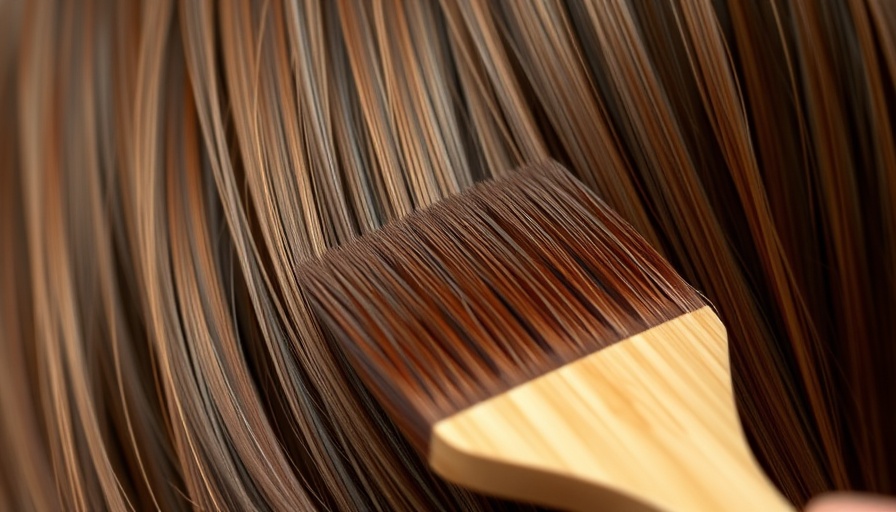
Transform Your Hair Naturally: The Allure of Herbal Dyes
The quest for salon-quality hair color without harsh chemicals is a growing trend as many women seek alternatives that enhance their beauty while safeguarding their health. Using herbal dyes offers a gentle solution that not only colors but also conditions your hair, leading to a vibrant and healthier look. With a virtual shelf in every health-conscious individual’s home, getting stunning hues is easier than ever.
Choosing the Right Shade: A Personalized Approach
Before embarking on your herbal dye journey, selecting the right color is pivotal. Unlike traditional chemical dyes that drastically alter your look, herbal options, such as henna and indigo, complement your natural hair tone. According to haircare expert Clelia Cecilia Angelon, "Herbal dyes will look different on light brown hair versus dark brown hair." This means that understanding your base color helps set realistic expectations for the results.
As you explore your options, always consider your existing hair color. If your locks are dark, leaning towards warm, rich tones rather than strikingly lighter shades is advisable. A beautiful outcome often stems from enhancing your natural tones instead of overpowering them. Remember, if you’re uncertain, it’s better to go with a shade lighter first—this way, you can deepen the color in later applications if desired.
The Irreplaceable Patch Test: Safety First
Even though herbal components are naturally derived, it's crucial to perform a patch test to prevent unexpected allergic reactions. This simple precaution can provide peace of mind and a hint of the end result. As advised by Angelon, "Mix a small amount of the herbal powder with water and apply it to a discreet area of skin, such as behind your ear.” Doing this not only ensures safety but also allows you to preview how the color interacts with your skin tone.
Mixing and Application: Your Step Towards Gorgeous Hair
Now that you’ve chosen your shade and performed the patch test, the application process is essential for achieving that beautiful look. Consider this step as applying a nourishing hair mask rather than a chore. In a non-metallic bowl, mix the herbal powder with warm water until smooth. Let the mixture sit as per the instructions, allowing the pigments to activate.
When ready, wear gloves for the application. Start at your roots and work through to the tips, ensuring even saturation throughout. Angelon suggests piling your hair on top of your head and covering it with a shower cap, which helps preserve heat and thus enhance cleansing properties. Patience is key—allow the mixture to develop for the recommended time, typically between 30 minutes to an hour. Rinse thoroughly, and you’ll notice not just color, but remarkable shine!
Benefits of Choosing Herbal Dyes: Not Just About Color
Beyond the aesthetics, herbal dyes offer a rich reservoir of benefits that make them an appealing choice for modern women. Unlike conventional chemical dyes that can strip your hair of its vitality, these natural alternatives maintain and enhance your hair’s health, as herbal ingredients are known for their nourishing properties. Henna, for example, is renowned for its ability to promote hair growth and a healthier scalp, while indigo adds a significant boost to hair thickness and shine.
With the rise of sustainability and eco-conscious living, opting for herbal dyes aligns beautifully with a broader commitment to environmental responsibility. By using plant-based products, you help reduce chemical runoff into our water systems—further promoting a healthier planet.
Current Trends in Beauty: Embracing Herbal Colors
In line with contemporary beauty standards, the trend towards natural hair coloring reflects a wider movement towards holistic wellness. As consumers become more educated about the potential risks associated with chemical processing, investing in herbal dyes becomes increasingly attractive. Riding on this wave are brands that take pride in transparency and clean ingredients. This empowers women to make informed beauty choices that resonate with their values.
Make Your Move: Elevate Your Hair Care Ritual
The act of coloring your hair with herbal dyes can transform into a self-care ritual, a moment of creativity and relaxation in your routine, rather than a hurried chore. Embracing this holistic approach allows you to connect with your hair, enhancing its natural beauty as you care for your health.
Ready to experiment with herbal dyes? Gather your materials, explore your color options, and give your hair the nurturing treatment it deserves. The journey to stunning, healthy hair is just a few simple steps away!
 Add Row
Add Row  Add
Add 




Write A Comment